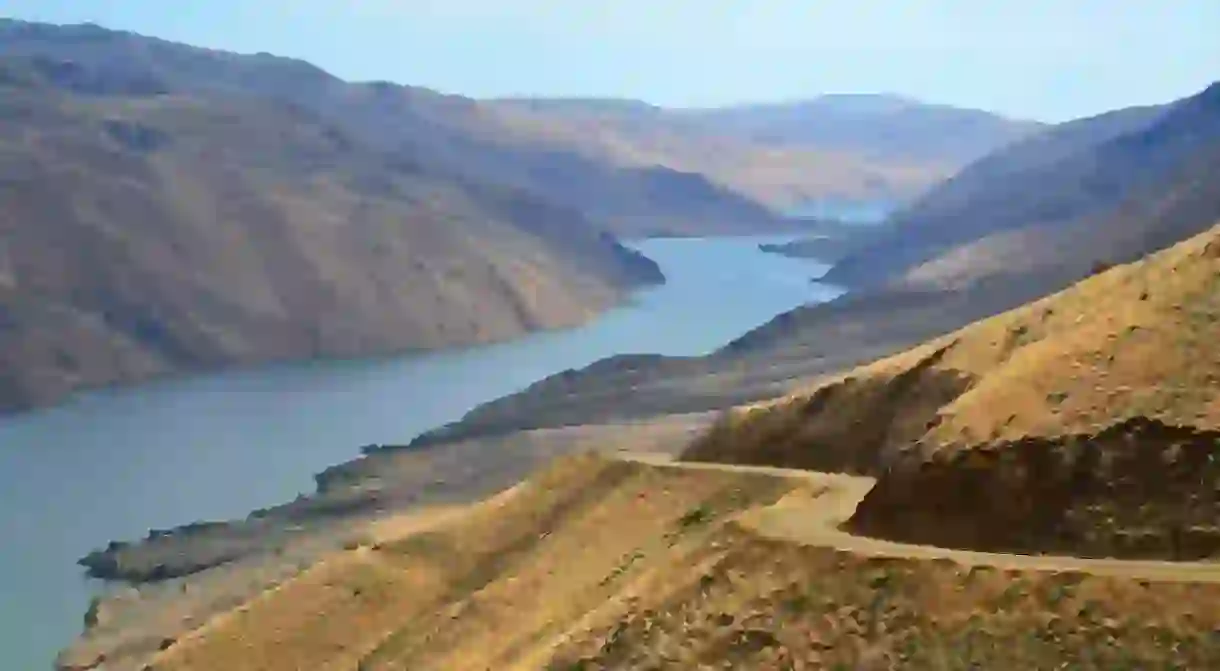A Guide to Hells Canyon, America’s Deepest River Gorge

Rising 7,900 feet (2,133.6 meters) high, Hells Canyon is the deepest river gorge in America. Carved by the Snake River millions of years ago, the canyon is equally remote as it is rugged. But this destination isn’t just for wildlife enthusiasts – the gorge offers travelers ample opportunities to take advantage of the canyon and all of its splendors.
How to get there
Ten miles (16 kilometers) wide, Hells Canyon has several options for catching a glimpse of the Snake River and the steep canyon walls that surround it. For a quick scenic vista, head to the overlook on the Wallowa Mountain Loop – accessible via Route National Forest Road 39 (part of the Hells Canyon National Scenic Byway). For the best views of the canyon, journey to the 5,400-foot-high (1,646-meter-high) Hells Canyon Overlook where views stretch for miles; however, this road is only open from summer through early fall. The Snake River Segment of the Wallowa Mountain Loop is open year-round, its route following the edge of the reservoir in Idaho for 30 miles (48.2 kilometers), crossing the river at Hells Canyon Dam and into Oregon.
Pro tip: there are no gas stations to fill up along these roads. Nearby towns in Idaho (Riggins, Lewiston, Grangeville, Whitebird), Oregon (Imnaha and Pine Creek), and Washington (Clarkston and Asotin) have services such as gas stations, stores, lodging, and restaurants.

What to see and do
Hells Canyon Wilderness and National Recreation Area beckons to nature lovers and active adventurers. A prime destination for hiking, Hells Canyon has over 900 miles (1,448.4 kilometers) of trails stretching across its vast span of rugged terrain, rivers, and wild landscapes. For an easy day hike, embark on the McGraw Rim Trail, a 3.6-mile (5.7-kilometer) venture through the canyon with views of herds of elk, bighorn sheep, and mountain goats in the distance.
The Stud Creek Trail, ideal for novices, starts below Hells Canyon Dam at the visitors center and offers ample opportunities to stop and enjoy the view over a picnic. While lower-elevation hikes are the easiest way to experience the canyon, visitors should be aware of scorching summer temperatures and poison oak. Higher-elevation – and more difficult – hikes provide cooler temperatures, panoramic views, and blossoming mountain-top wildflowers.
Fishing, boating, and rafting are also popular, which can be booked through adventure companies such as Hells Canyon Adventures. To cover more distance faster, opt for horseback riding, mountain biking, or a multi-day backpacking trip.

Where to stay
Within Hells Canyon, there are a fair share of campgrounds, RV parks, and historic ranches as well as boat launches – all within a one-quarter mile (.4 kilometers) of Snake River. These include Hells Canyon Creek Visitor Center, Hells Canyon Boat Launch, Kirkwood Historic Ranch, Pittsburg Landing Boat Launch, Pittsburg Campground, and Cache Creek Ranch. Several adventure companies also offer multi-day excursions, camping trips, and lodging.

Hells Canyon National Recreation Area
Hells Canyon is renowned for its abundant wildlife of both rare and endangered species. It has one of the largest elk herds in the nation and is where the peregrine falcon was reintroduced. Designated a National Recreation Area in 1975, Hells Canyon Wilderness and Recreation Area stretches over 652,000 acres with over 400 species of animals occupying its lands, such as bald eagles, bighorn sheep, mule and white-tailed deer, black bears, bobcats, otters, cougars, and beavers. Three of its rivers – the Snake, Imnaha, and Rapid – are also designated Wild and Scenic. So if you’re looking to get in touch with nature, this is it.














